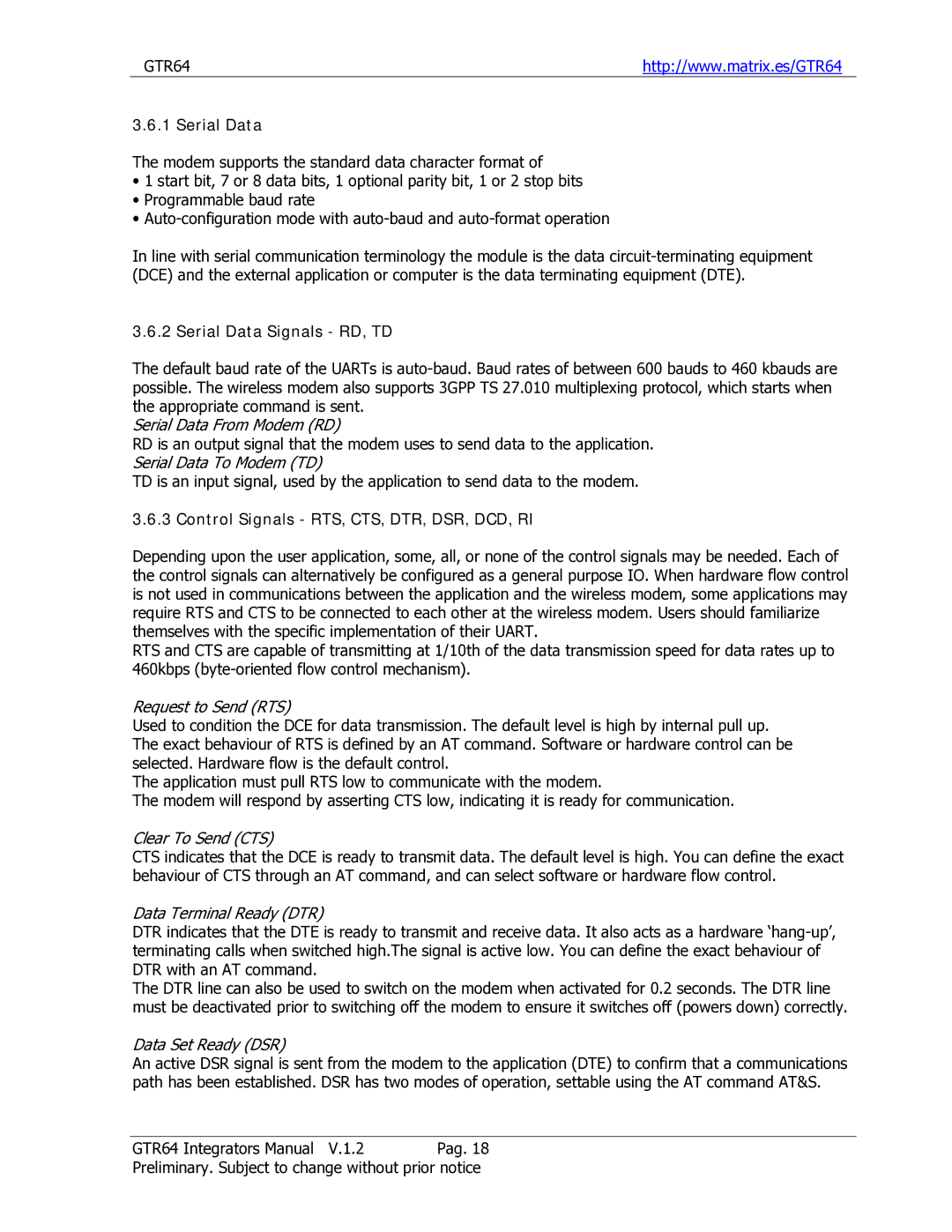GTR64 | http://www.matrix.es/GTR64 |
3.6.1 Serial Data
The modem supports the standard data character format of
•1 start bit, 7 or 8 data bits, 1 optional parity bit, 1 or 2 stop bits
•Programmable baud rate
•
In line with serial communication terminology the module is the data
3.6.2 Serial Data Signals - RD, TD
The default baud rate of the UARTs is
Serial Data From Modem (RD)
RD is an output signal that the modem uses to send data to the application.
Serial Data To Modem (TD)
TD is an input signal, used by the application to send data to the modem.
3.6.3 Control Signals - RTS, CTS, DTR, DSR, DCD, RI
Depending upon the user application, some, all, or none of the control signals may be needed. Each of the control signals can alternatively be configured as a general purpose IO. When hardware flow control is not used in communications between the application and the wireless modem, some applications may require RTS and CTS to be connected to each other at the wireless modem. Users should familiarize themselves with the specific implementation of their UART.
RTS and CTS are capable of transmitting at 1/10th of the data transmission speed for data rates up to 460kbps
Request to Send (RTS)
Used to condition the DCE for data transmission. The default level is high by internal pull up. The exact behaviour of RTS is defined by an AT command. Software or hardware control can be selected. Hardware flow is the default control.
The application must pull RTS low to communicate with the modem.
The modem will respond by asserting CTS low, indicating it is ready for communication.
Clear To Send (CTS)
CTS indicates that the DCE is ready to transmit data. The default level is high. You can define the exact behaviour of CTS through an AT command, and can select software or hardware flow control.
Data Terminal Ready (DTR)
DTR indicates that the DTE is ready to transmit and receive data. It also acts as a hardware
The DTR line can also be used to switch on the modem when activated for 0.2 seconds. The DTR line must be deactivated prior to switching off the modem to ensure it switches off (powers down) correctly.
Data Set Ready (DSR)
An active DSR signal is sent from the modem to the application (DTE) to confirm that a communications path has been established. DSR has two modes of operation, settable using the AT command AT&S.
GTR64 Integrators Manual V.1.2 Pag. 18
Preliminary. Subject to change without prior notice
